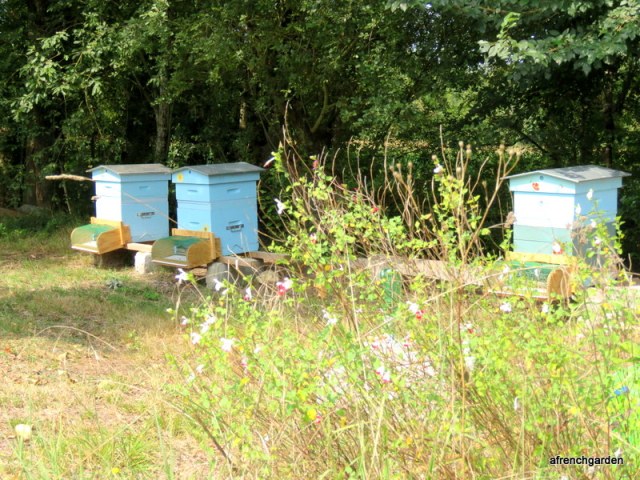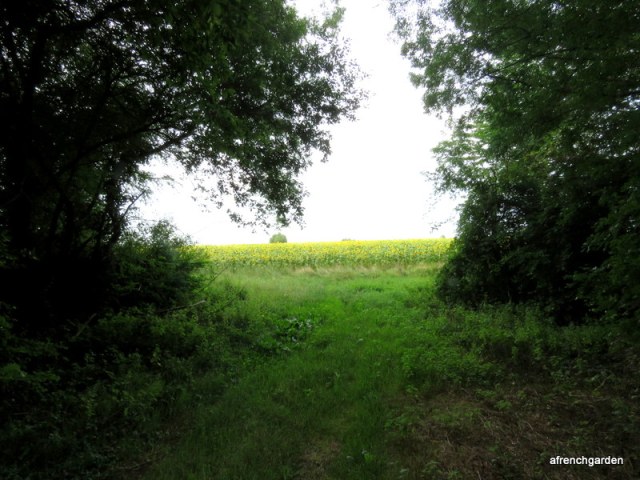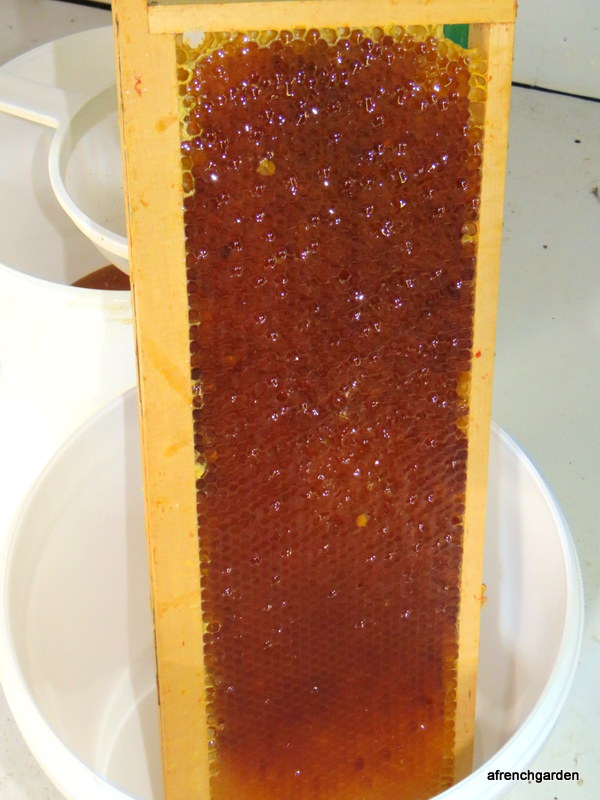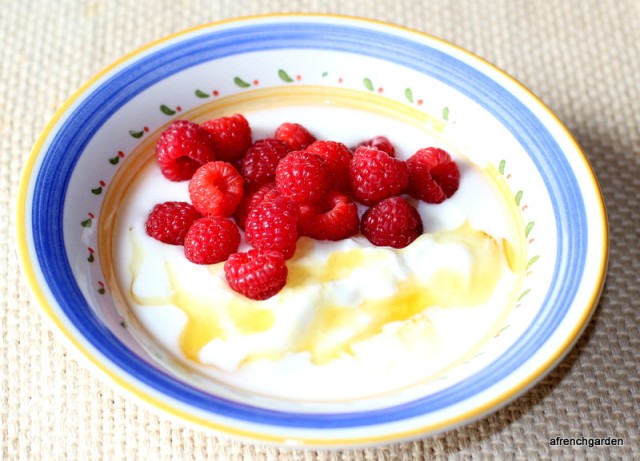It was first Violette and then pissenlit that we lost in May after they swarmed. In each case the story was the same. The colonies came out of winter very strong, but a week or so after they swarmed, the new queens did not manage to develop the colonies well.
I saw a bundle of bees on the grass in front of the hive

On close inspection Amelia and I saw the queen right in the middle, with the bees protecting her.

The story seems to have been similar with other beekeepers. I talked to another beekeeper near us with 44 hives and she had lost 11 colonies after they swarmed.
So, despite the fact that in May and June we collected 10 swarms and gave them all away, we started the summer in our own apiary with only 3 hives. Unfortunately when August came, the bees were once again attacked by the Asian hornets and I had to instal the modified muzzles with larger grills (1cm x 1cm) in front the hives to protect them. The hornets still come and take a few bees, but at least the rest are not so stressed.

The acacias flowered and then the chestnut trees all around our house. They were followed with the sunflowers. Just a short distance away I could look through the woods and see the fields of sunflower

A short walk and there laid before us the yellow field

We did check the individual flower heads, and true enough, our bees were busy.

At 6.45 am on 21st August Amelia and I removed the frames from the supers of all three hives and placed each of them in a separate plastic box and took them to my friend, Michel’s house for extraction. Michel was standing in the garden, waiting for us.
The first stage was taking each frame and removing the wax before placing them in the centrifuge. It was, however, immediately obvious that we had two distinct colour of honey; the darker one containing more chestnut honey was even more viscous. So we tried to keep the darker honey separate.
Once the wax was removed we saw beautiful glistening honey.

Soon after placing the frames in the centrifuge and starting the motor, the honey started to flow.

It is something truly amazing about honey. Depending on the flowers near us, we get different colour as well as different flavour of honey each season. Even the honey of our friend Michel who lives only a kilometre away is distinctly different from ours.
Last year we had really yellow honey that obviously a large proportion of which came from the sunflowers. Only two or three jars are left from last year. We gave a lot away and now I wish we had kept more for ourselves as the flavours of the individual honeys are so different and the yellow honey would bring sunshine into the winter days.
Last year’s honey is on the left of the picture below, with this years dark and light honey in jars. The second jar from left is our spring 2017 honey, which comes mostly from the spring flowers and also the rape seeds.

At the moment my favourite desert is the natural yogurt that Amelia serves with our own raspberries and a drizzle of this year’s honey. Delicious!

So another season has finished and a new season for the bees has started. We will do everything we can to protect our bees this winter and hope that the winter will also be mild and mellow for all of you.
– Kourosh

